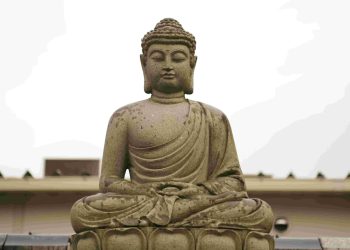Unlocking Calm: Guided Meditation Techniques for Stress Relief
In a world that seems to spin faster with each passing day, the search for tranquility has become an urgent quest. It is remarkable how many people neglect the profound impact that guided meditation can have on their mental well-being. Just as the ancient sages taught us, the path to inner peace is often hidden in the simplest of practices. This article aims to delve into guided meditation techniques specifically designed for stress relief, thereby providing not just a tool for relaxation, but a pathway to a more centered existence.
The Personal Transformation Journey
My own journey into meditation began in the midst of a professional upheaval. Ambition had driven me to the brink of burnout; days blurred into sleepless nights filled with anxiety. Yet, it was through the soothing voice of a guided meditation that I discovered an anchor amidst the chaos. With each session, I felt the shackles of stress loosen, granting me a glimpse of the larger narrative we often miss—the importance of mindfulness in our hyper-connected lives.
Redefining Stress Relief
Traditionally, stress relief has been synonymous with short-lived escapes—weekend getaways, retail therapy, or even binge-watching the latest series. But what if we challenged this norm? What if, instead, we harnessed the power of meditation to not merely escape, but engage with our stressors directly? As Jon Kabat-Zinn, a pioneer in mindfulness-based stress reduction, aptly puts it, “You can’t stop the waves, but you can learn to surf.” Guided meditation provides that surfboard for navigating life’s turbulent waters.
Utilizing Interdisciplinary Knowledge
Guided meditation is not confined to the realm of spirituality; it harbors insights from psychology, neuroscience, and even business management. Understanding the brain’s operation during meditation enhances our grasp of its benefits. Research shows that meditation stimulates the prefrontal cortex responsible for decision-making and emotional regulation, offering a scientific backbone to the anecdotal experiences shared by practitioners. By combining psychology’s insights with the practical techniques of business resilience training, individuals can reshape their stress management strategies.
Looking Ahead: The Future of Meditation
As we look to the future, a paradigm shift is underway. Remote work, economic fluctuations, and global uncertainty have redefined the workplace. Stress management techniques, such as guided meditation, are becoming indispensable tools for personal and organizational resilience. Envision a world where companies prioritize mental health, leveraging meditation as a core component of their culture. Tapping into this resource could not only enhance employee productivity but also foster a more compassionate work environment.
Practical Steps for Implementation
For those eager to incorporate guided meditation into their daily routines, here are some actionable strategies:
-
Start Small:
Dedicate just five to ten minutes daily to guided meditation. Apps like Headspace or Calm can ease this entry. -
Create a Space:
Designate a quiet area for meditation. Personalize it with candles, cushions, or any elements that evoke a sense of peace. -
Choose Your Guide:
Experiment with various guided sessions—some focus on breathing, while others may address physical sensations or visualization. -
Consistency is Key:
Aim to meditate at the same time each day to cultivate a habit. Over time, your mind will begin to associate this time with relaxation. -
Reflect and Adapt:
Post-meditation, take a moment to reflect on your feelings. Adapt your sessions based on what feels most beneficial.
Imagery in Meditation
Consider guided meditation as a painter’s canvas. Each session can transform your mind into a vivid landscape. Utilize metaphors like a flowing river for your breath, visualizing stress as stones washed away by the current. Such imaginative exercises can deepen your practice, making the abstract concept of mind-clearing inherently relatable.
The Importance of Lifelong Learning
Just as we invest in our careers and personal lives, non-stop learning in meditation cultivates adeptness. Read books on mindfulness from thought leaders like Eckhart Tolle or Pema Chödrön. Engage in local meditation groups or attend workshops. The more you learn, the richer your practice becomes, setting a dynamic foundation for continual personal growth.
Call to Action
It’s time to prioritize your mental well-being proactively. Grab your phone, download a meditation app, and commit to just five minutes tomorrow morning. Remember, this isn’t about perfection; it’s about progress. With each moment you dedicate to guided meditation, you’re scaffolding a stronger, calmer version of yourself. Step away from distractions and embrace the stillness. Your journey to stress relief is just a heartbeat away.
Questioning the Norms
In a society that often glorifies busyness, choosing to pause and meditate can feel radical. Nevertheless, let us challenge that notion. Meditation is not a luxury—it’s a necessity, fostering not just individual well-being but societal harmony. By questioning our busy schedules, we can recognize the inherent value of stillness. Every time you meditate, you contribute to a collective shift towards prioritizing mental health across communities.
A Final Reflection
As we circle back to where we began, it is clear that the winds of change in mental health practices are strong. Guided meditation stands as a beacon of hope amid stress’s overwhelming tide. Embrace it, learn from it, and witness the transformation it brings into your life. Your calm begins with a single breath.










